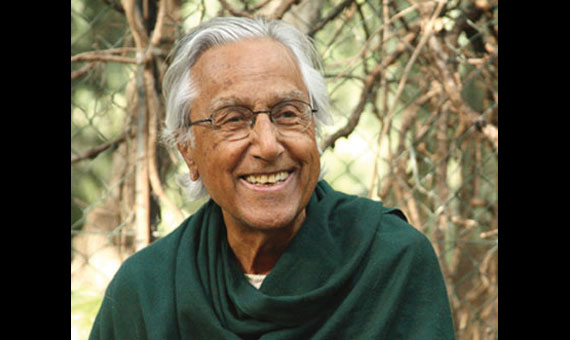Azadi ka Amrit Mahotsav Kolkata event honours four Clergymen
Pope Francis asks businesses to support working women: They’re ‘afraid to get pregnant’
Study: Christianity may lose majority, plurality status in U.S. by 2070
Indian politician declines Magsaysay Award under party pressure
Like John Paul II, Pope Francis heads to Kazakhstan during time of war

If we make an assessment of the theological reflections in India in the post Independent era, we will find three important trends: contemplative, theological and liberative. A great symbol of Indian contemplative current was the emergence of Christian Ashrams in the country along the model of Hindu and Buddhist Ashrams. The inspiration given by the foreign missionaries like Monchanin, Abhishiktananda, Bede Griffiths, Francis Acharya and Sara Grant enthused many Indians like Fr D.S. Amalorpavadass, Sr Vandana, Fr Sebastian Painadath, Fr Emmanuel Vattakkuzhy, Fr Samarkone, Fr Mookenthottam, Fr Vineeth and many others to lead ashramic life. Their ashrams became the laboratories for authentic experiments in liturgy, para-liturgical services and contemplation. Indian ways of prayer and meditation were fashioned by them and valuable literature on contemplative life was published thanks to their efforts.
Another major initiative was in the field of theology. In this regard, we cannot forget the number of colloquiums, seminars and workshops that were conducted at national and regional levels in the several institutes of theological learning and formation centers following the International Research Seminar on Non-Biblical Scriptures which was organized by D.S. Amalorpavadass, at Nagpur in 1975. Since the 70s the pontifical institutes, major seminaries and study centres have been producing voluminous works of theology and philosophy by way of publishing books and articles through the publications and scientific journals they started. These theological endeavours prepared the framework for the development of theology of inculturation, inter-religious dialogue and contextual theologies.
The third phase of Indian theology is liberative. In this regard, one of the best Indian achievements would be the emergence of Dalit Theology which draws reflections from the most oppressed and marginalized groups in the society. Dalit constructions have the smell and sweat of physical and mental agonies and their suffering triggers the imagination for new theological insights. In the same vein, certain attempts are being done towards the formulation of feminist and tribal theologies. The impact of liberation theology did not remain merely in the theological realm. It inspired thousands of social activists to fight for the cause of the marginalized and unorganized people even in the remote villages of India.
It is a matter of pride to recall here some of the veterans of the indigenous theologians who have left us with a great legacy of theological culture: George Soares Prabhu (1929-1995) D.S. Amalorpavadass (1932-1990) Sebastian Kappen, (1924-1993) and Raimundo Panikkar (1918- 2010) There are so many others who continue their itinerary with us like Samuel Rayan (1920-) Michael Amaladoss (1936-) Felix Wilfred (1948-), Lucien Legrand, Kuncheria Pathil, and so on and so forth.
Theologizing includes two steps: creative awareness and verbal articulation. The first stage embraces the fact of being aware of the cultural contexts in which Christians live and the efforts to live gospel in a meaningful way in the given milieu. There are a lot of bishops, priests, religious and laymen who render commendable service in this realm. The second stage consists of articulating scientifically doctrinal discourses with reference to the cultural environment in terms of the values upheld by the gospel and the tradition of Christian faith. Church in India is rather poor in exercising this challenging task.
kundu1962@gmail.com
Leave a Comment